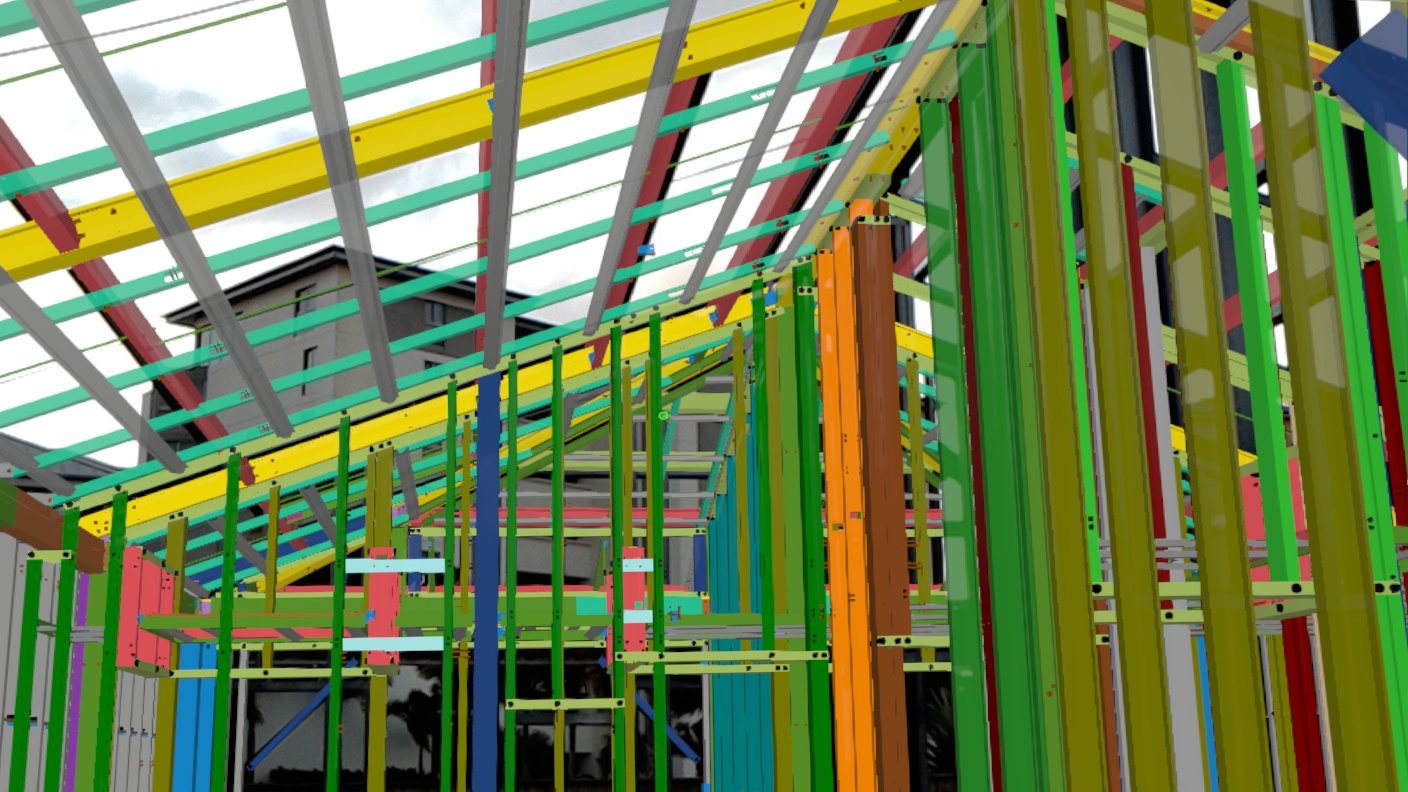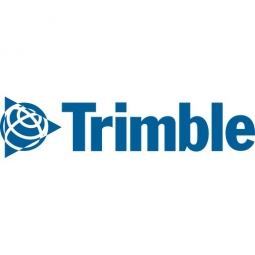Download PDF
Termotex S.A. Streamlines Workflows and Boosts Productivity with Trimble's Connected Construction Technology

Technology Category
- Analytics & Modeling - Virtual & Augmented Reality Software
- Wearables - Augmented Reality Glasses, Headsets & Controllers
Applicable Industries
- Cement
- Construction & Infrastructure
Applicable Functions
- Product Research & Development
- Quality Assurance
Use Cases
- Construction Management
- Mixed Reality
Services
- System Integration
- Testing & Certification
The Challenge
Termotex S.A., an international company specializing in the design and assembly of industrialized insulating construction systems, was facing challenges in coordinating crews, deciphering blueprints, and matching 2D blueprints to the 3D construction at the site. The company had to rely on a project engineer and a quality control inspector on site, but this was often insufficient to avoid mistakes and clashes resulting from incorrect or outdated information. To overcome this, Termotex started creating Building Information Modeling (BIM) designs and switched to tablets instead of paper blueprints on the job site. However, the CEO, Andres Casanova, realized that a good BIM model alone was not enough to increase speed and precision in their construction projects. He sought a combination of technologies and new workflows that would enable automation and data-sharing from start to finish, and wanted to leverage mixed reality to better utilize their BIM models in the context of the actual job site throughout the entire construction process.
The Customer
Termotex S.A.
About The Customer
Termotex S.A. is an innovative, international company that specializes in the design, integration, prefabrication and assembly of industrialized insulating construction systems with millimeter precision. With over 15 years of experience, Termotex has offices in Panama, Aruba, Curaçao, Bonaire, Dominican Republic and the United States and aspires to become the main provider of this type of system in America. As a forward-thinking company, Termotex is committed to investing in construction technology that can improve the company’s processes and drive overall growth. By tapping into a wide range of Trimble solutions and taking a connected construction approach, Termotex is optimizing its processes and delivering unmatched accuracy, efficiency and quality.
The Solution
Termotex adopted multiple Trimble technology solutions to maximize constructive data and real-time collaboration for the entire design, build and operate lifecycle. They used Trimble Tekla Structures for BIM design, enabling designers and engineers to create comprehensive, information-rich 3D models that contain all the data needed to build and maintain a structure. Termotex also used Trimble SysQue to create a constructible MEP model based on real-world, manufacturing-specific content that is ready for fabrication. By taking a connected construction approach, Termotex extended BIM beyond design by using the same building data in the field and connecting it to Trimble Robotic Total Stations for layout. The RPT600 with Trimble Field Link’s automated functions and guided workflows helped Termotex workers in the field identify the exact locations on site that correspond to points in the model with incredible precision. For assembly, Trimble Connect for HoloLens, a mixed reality solution, allowed Termotex workers in the field to blend real world objects with digital holograms, visualizing the constructible model by overlaying it on the physical environment, which helped ensure quality control.
Operational Impact
Quantitative Benefit
Related Case Studies.

Case Study
System 800xA at Indian Cement Plants
Chettinad Cement recognized that further efficiencies could be achieved in its cement manufacturing process. It looked to investing in comprehensive operational and control technologies to manage and derive productivity and energy efficiency gains from the assets on Line 2, their second plant in India.

Case Study
IoT System for Tunnel Construction
The Zenitaka Corporation ('Zenitaka') has two major business areas: its architectural business focuses on structures such as government buildings, office buildings, and commercial facilities, while its civil engineering business is targeted at structures such as tunnels, bridges and dams. Within these areas, there presented two issues that have always persisted in regard to the construction of mountain tunnels. These issues are 'improving safety" and "reducing energy consumption". Mountain tunnels construction requires a massive amount of electricity. This is because there are many kinds of electrical equipment being used day and night, including construction machinery, construction lighting, and ventilating fan. Despite this, the amount of power consumption is generally not tightly managed. In many cases, the exact amount of power consumption is only ascertained when the bill from the power company becomes available. Sometimes, corporations install demand-monitoring equipment to help curb the maximum power demanded. However, even in these cases, the devices only allow the total volume of power consumption to be ascertained, or they may issue warnings to prevent the contracted volume of power from being exceeded. In order to tackle the issue of reducing power consumption, it was first necessary to obtain an accurate breakdown of how much power was being used in each particular area. In other words, we needed to be able to visualize the amount of power being consumed. Safety, was also not being managed very rigorously. Even now, tunnel construction sites often use a 'name label' system for managing entry into the work site. Specifically, red labels with white reverse sides that bear the workers' names on both sides are displayed at the tunnel work site entrance. The workers themselves then flip the name label to the appropriate side when entering or exiting from the work site to indicate whether or not they are working inside the tunnel at any given time. If a worker forgets to flip his or her name label when entering or exiting from the tunnel, management cannot be performed effectively. In order to tackle the challenges mentioned above, Zenitaka decided to build a system that could improve the safety of tunnel construction as well as reduce the amount of power consumed. In other words, this new system would facilitate a clear picture of which workers were working in each location at the mountain tunnel construction site, as well as which processes were being carried out at those respective locations at any given time. The system would maintain the safety of all workers while also carefully controlling the electrical equipment to reduce unnecessary power consumption. Having decided on the concept, our next concern was whether there existed any kind of robust hardware that would not break down at the construction work site, that could move freely in response to changes in the working environment, and that could accurately detect workers and vehicles using radio frequency identification (RFID). Given that this system would involve many components that were new to Zenitaka, we decided to enlist the cooperation of E.I.Sol Co., Ltd. ('E.I.Sol') as our joint development partner, as they had provided us with a highly practical proposal.

Case Study
Splunk Partnership Ties Together Big Data & IoT Services
Splunk was faced with the need to meet emerging customer demands for interfacing IoT projects to its suite of services. The company required an IoT partner that would be able to easily and quickly integrate with its Splunk Enterprise platform, rather than allocating development resources and time to building out an IoT interface and application platform.

Case Study
Bridge monitoring in Hamburg Port
Kattwyk Bridge is used for both rail and road transport, and it has played an important role in the Port of Hamburg since 1973. However, the increasing pressure from traffic requires a monitoring solution. The goal of the project is to assess in real-time the bridge's status and dynamic responses to traffic and lift processes.

Case Study
Bellas Landscaping
Leading landscaping firm serving central Illinois streamlines operations with Samsara’s real-time fleet tracking solution: • 30+ vehicle fleet includes International Terrastar dump trucks and flatbeds, medium- and light-duty pickups from Ford and Chevrolet. Winter fleet includes of snow plows and salters.






